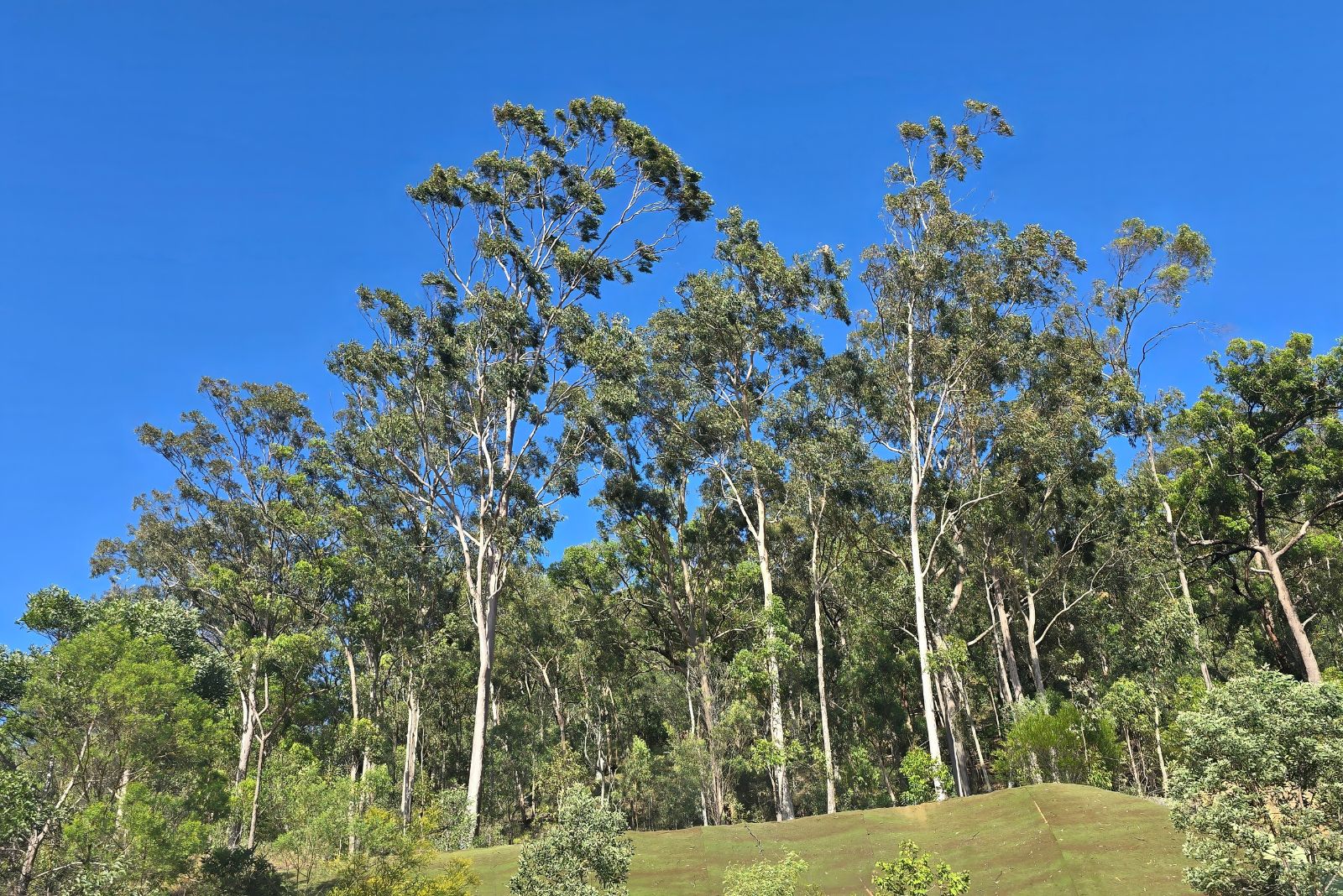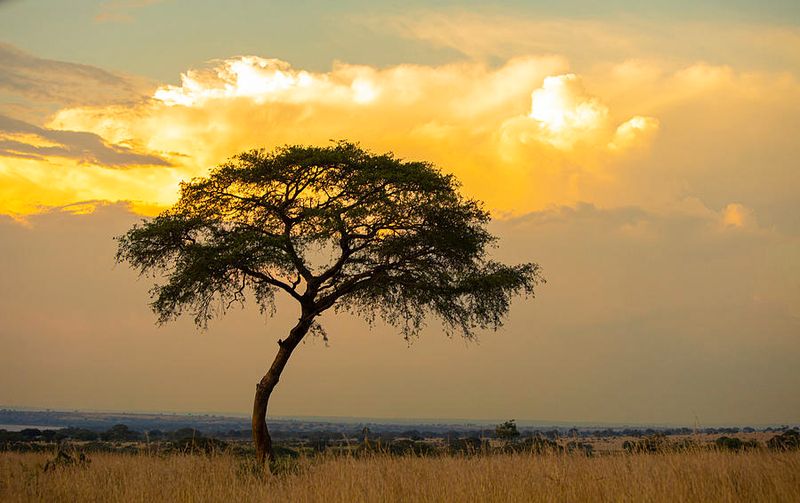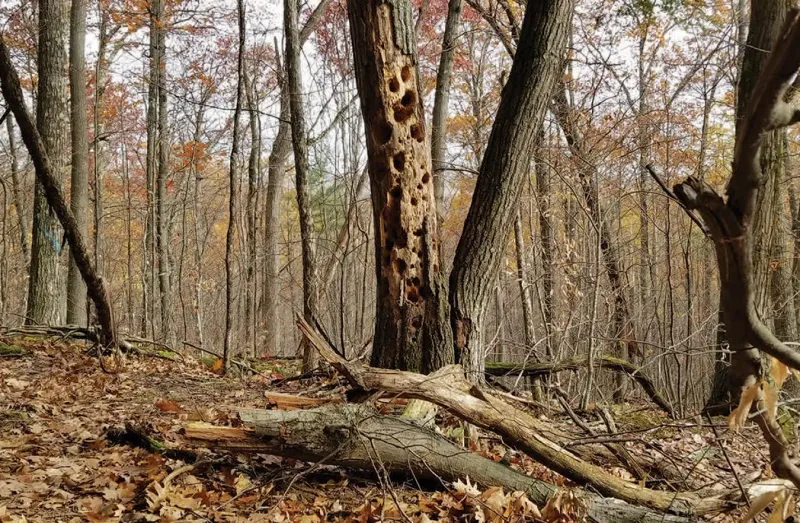Some trees in California stand tall but carry a risk that grows with every dry, windy day. Their branches ignite easily, their needles or bark shed sparks, and their dense growth can turn a small flame into a fast-moving threat.
Many homeowners first notice the danger when fire season creeps in and the air feels tight with heat. Certain species have earned a reputation for fueling wildfires so quickly that state rules call for their removal in high-risk zones. Understanding which trees raise the stakes helps protect homes, neighborhoods, and the land Californians work hard to keep safe.
1. Eucalyptus Trees
Eucalyptus trees contain highly flammable oils in their bark and leaves, making them dangerous during wildfire season. Originally from Australia, these fast-growing giants shed strips of papery bark that pile up like kindling around their base.
California fire codes often require removal within defensible space zones. Their volatile oils can cause explosions during fires, sending embers flying to nearby structures.
Professional removal is essential since these trees grow massive root systems and can reach over 100 feet tall.
2. Italian Cypress
Standing like green columns in many California yards, Italian cypress trees are beautiful but burn incredibly fast. Their dense, resinous foliage contains oils that ignite easily and create intense flames reaching temperatures hot enough to melt metal.
Fire officials call them vertical torches because flames travel up their narrow shape in seconds. Many communities now ban planting them near homes or property lines.
Removal becomes mandatory when they fall within required defensible space boundaries around structures.
3. Monterey Pine
Native to California’s coast, Monterey pines seem harmless but become serious fire hazards as they age. Dry lower branches accumulate underneath while sticky pitch throughout the tree feeds flames rapidly.
These pines drop massive amounts of needles that form thick, flammable carpets on the ground. During droughts, they stress easily and produce even more combustible dry wood.
Homeowners must clear them from areas within 30 to 100 feet of buildings, depending on local regulations and slope.
4. Acacia Trees
Acacia trees might look delicate with their feathery leaves, but they pack a dangerous punch during fire season. Their wood contains flammable resins, and they constantly drop small twigs and seed pods that create perfect fire starter piles.
Many species grow aggressively and spread quickly, creating dense thickets. California fire safety codes target acacias in high-risk zones because they burn hot and fast.
Removal requires careful planning since their thorny branches and tough wood challenge even experienced tree services.
5. Dry Trees Of Any Species
Nothing poses more fire danger than dry, fallen trees, regardless of species. Drought-stressed or diseased trees lose moisture and become essentially dried-out wooden torches waiting to ignite.
California law specifically requires removing destroyed trees within defensible space zones around homes and buildings. Bark beetles and disease have destroyed millions of trees statewide, creating urgent removal needs.
Insurance companies may deny claims if falen trees contributed to fire damage, making removal both a legal requirement and financial necessity for homeowners.
6. Palm Trees With Dry Fronds
Palm trees create unique fire hazards when dry fronds accumulate like a skirt around their trunks. These dried leaves ignite instantly and burn with shocking intensity, often causing the entire tree to become a towering inferno.
California building codes require regular trimming to remove dry fronds, and complete removal when palms are too close to structures. Burning palm debris sends flaming material airborne, spreading fires to roofs and neighboring properties.
Many fire departments respond to palm tree fires that started from a single spark or cigarette.
7. Juniper Shrubs And Trees
Juniper plants contain highly volatile oils that make them extremely flammable year-round, earning them a spot on California’s fire hazard list. Whether shrub-sized or tree-form, junipers burn explosively and generate tremendous heat.
Their dense growth habit traps dry material inside, creating hidden fuel loads. Fire can smolder within a juniper before suddenly erupting into flames.
Removal is mandatory in defensible space zones, and many fire-wise landscaping programs recommend replacing them entirely with fire-resistant alternatives throughout your property.
8. Overgrown Cedar Trees
Cedar trees become fire hazards when allowed to grow too large or too close to homes and other structures. Their aromatic oils smell wonderful but burn readily, and their shaggy bark peels off in flammable strips.
Overgrown cedars with branches reaching the ground create ladder fuels that carry fire from grass up into tree canopies. California regulations require maintaining clearance between lower branches and ground level.
Complete removal becomes necessary when cedars violate setback requirements or exceed safe size limits for their location on your property.
9. Pepper Trees Near Structures
California pepper trees drop copious amounts of fine, dry leaves and small berries that accumulate quickly into combustible layers. While somewhat fire-resistant when healthy and well-watered, they become dangerous when stressed or positioned too close to buildings.
Their drooping branches often touch roofs or walls, creating direct pathways for flames. Local fire codes specify minimum distances from structures, frequently requiring removal when pepper trees violate these setbacks.
Regular maintenance helps, but relocation or removal offers the only permanent solution for improperly placed specimens.










